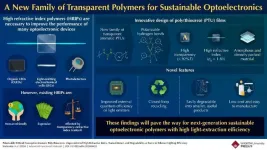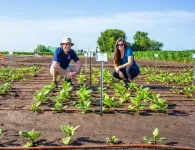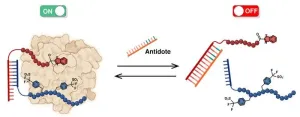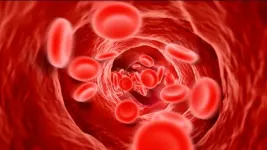Journal of Pharmaceutical Analysis articles reveal the importance of phytocompounds and metabolomics analysis
Researchers address drug-related toxicity in chemotherapy and explore alternatives from traditional Chinese medicine to treat diabetic neuropathy
2024-04-30
(Press-News.org)
IBD is a common chronic gastrointestinal disorder and current treatment strategies can cause adverse effects. Thus, there is a need to identify alternative compounds to treat IBD. Similarly, the dose-related toxicity and efficacy of anticancer drugs needs to be monitored accurately to improve the treatment outcomes. Moreover, over the years, plant-based therapeutic compounds and traditional Chinese medicine formulas have gained attention for their enhanced healing effects and are promising for various treatment regimens.
The recent issue of the JPA, published in February 2024, addresses these issues in three different studies, respectively, and highlights the role of metabolomics in pharmaceutical research in all of them.
The first study delves into the identification and extraction of a plant-based, acidic polysaccharide named SUSP-4 from Selaginella uncinata (Desv.) Spring, a scrawling herb also known as peacock moss. This article was available online on 10 August 2023 and published in Volume 14, Issue 2 of JPA. In the study, the phytocompound SUSP-4 was found to significantly improve the symptoms of IBD, such as low body weight and high disease activity index, during animal experiments. Genetic sequencing studies revealed that SUSP-4 altered the gut microbial composition and downregulated the levels of Akkermansia, a bacterium commonly found in the human gut. Additionally, SUSP-4 inhibited the immune response of macrophage activation by altering the chemokine levels in treated animals.
The plant polysaccharide ultimately affected the thiamine metabolic pathway and protected against IBD. The corresponding author Dr. Jinyong Peng states, “Our research found that IBD reduces the level of vitamin B1 (thiamine), which itself has an inhibitory effect on inflammation, so a moderate supplementation of vitamin B1 may go a long way towards preventing IBD in people.”
In the second study, scientists employed spatiotemporal metabolomics to closely monitor the administration of chemotherapeutic drug oxaliplatin in animal models. They used biocompatible microprobes to gather information about the efficacy and dose-related toxicity of the drug, which was locally administered through an in vivo lung perfusion method. The results of the metabolomic analysis revealed the extent of injury caused by the drug and provided a total of 139 specific compounds that indicated acute lung injury. The article was available online on 09 August 2023 and published in Volume 14, Issue 2 of JPA. According to the corresponding author, Prof. Janusz Pawliszyn, “This study describing the unique analytical protocol might be a starting point for future developments of tools that could be applied to prognosticate the patient’s pathological response to the selected chemotherapy treatment.”
In the third study, researchers studied diabetic peripheral neuropathy (DPN), a condition where the blood vessels and nerves are damaged due to improperly regulated metabolic pathways. They specifically targeted carbohydrate metabolism and developed a metabolomics approach using a high-performance ion chromatography technique and studied DPN in rats and humans. The researchers found that JinMaiTong (JMT), a traditional Chinese medicine supplement, was effective in treating DPN. Furthermore, metabolomics analysis revealed that JMT induces the activation of adenosine monophosphate-activated protein kinase and other downstream proteins involved in energy profile regulation. The article was available online on 21 September 2023 and published in Volume 14, Issue 2 of JPA. The corresponding author Prof. Xiaochun Liang concludes, “Our study proved the TCM formula JMT improved the neurological functions and attenuated the pathological damages of peripheral nerve in the progress phase of DPN rats. In-vivo and in-vitro studies demonstrated that the neuroprotective capacities of JMT should be attributed to the improved energy status with the vital role of the activated AMPK signaling, which is crucial for a better understanding of the clinical effect of JMT and proposes a promising treatment strategy for DPN for decades.”
Overall, these articles together underscore the importance of plant-based alternatives for disease treatment, as well as of advanced diagnostic tools through the development of metabolomics.
END
ELSE PRESS RELEASES FROM THIS DATE:
2024-04-30
Optoelectronic devices have found their way into many aspects of our daily lives, from OLED displays to photodetectors, security systems, and environmental monitoring. In all the applications, these devices utilize high refractive index polymers (HRIPs) to control light.
In general, the optical properties of transparent HRIPs enable efficient light transmission and manipulation, allowing optoelectronics devices to guide and control the flow of light to improve their performance. However, there are no low-cost options for HRIPs that can guarantee good optical performance while being transparent and environmentally ...
2024-04-30
It is possible to engineer increased mesophyll conductance in plants according to new research from the University of Illinois. Mesophyll conductance plays a key role in photosynthesis and refers to the ease with which CO2 can diffuse through a leaf’s cells before reaching the location where it is ultimately turned into sugar to feed the plant (carbon fixation). CO2 faces barriers as it moves through the leaf, including its own cell walls. Researchers from the Long Lab found that by increasing permeability and slightly reducing the thickness of cell walls, they could increase CO2 diffusion and uptake in a model crop.
“This is one of the ...
2024-04-30
Researchers at the University of Vienna, along with collaborators from France, Germany, Switzerland and the USA, have achieved a major breakthrough in understanding how genetic drivers influence the evolution of a specific photosynthesis mechanism in Tillandsia (air plants). This sheds light on the complex actions that cause plant adaptation and ecological diversity. The results of their study are now published in Plant Cell.
Some plant species have evolved a water-saving trait called Crassulacean Acid Metabolism (CAM). CAM plants like most ...
2024-04-30
Millions of working parents know the routine: bustle the kids off to childcare in the morning, work all day, then fight the daily traffic jams to get the kids back home. Something to drink, maybe a snack to munch, can help ease the commute.
Understandably, few parents take the time to think about the nutrients or calories involved, but experts at Cincinnati Children’s decided to take a closer look. Their eyebrow-raising findings were published April 27, 2024, in the journal Children’s Health Care.
The researchers took a fresh look at older data contained in daily food journals kept by more than 300 families of children who attended 30 childcare ...
2024-04-30
HOUSTON, SAN DIEGO and LONDON ― The University of Texas MD Anderson Cancer Center and Replay today announced that the Food & Drug Administration (FDA) has issued a ‘safe to proceed’ for the Investigational New Drug (IND) application for PRAME TCR/IL-15 NK (SY-307), an engineered T cell receptor natural killer (TCR NK) cell therapy for relapsed/refractory myeloid malignancies. MD Anderson is the IND sponsor.
PRAME TCR/IL-15 NK (SY-307) is being developed by Syena, an oncology-focused product company launched by Replay and MD Anderson based on the scientific discoveries of Katy ...
2024-04-30
PULLMAN, Wash. -- Researchers have discovered a new mechanism of oil biosynthesis and found a way to genetically engineer a type of test plant to more efficiently produce different kinds of seed oil that it otherwise wouldn't make.
While the engineering is proof-of-concept, this discovery could lead to improved production of valuable oils used in food and by a range of industries. The study, led by Washington State University researchers, was published in the journal Nature Communications.
“Scientists have been working on producing ...
2024-04-30
Anticoagulant treatments are crucial for managing many conditions, such as heart disease, stroke and venous thrombosis. Current options, however, carry an inherent risk of serious bleeding due to trauma or unforeseen events. A team from the University of Geneva (UNIGE) and the University of Sydney has developed a new anticoagulant, designed to have an on-demand reversible activity, with a fast-acting ‘‘antidote’’. This approach could revolutionise the use of anticoagulants in surgery or other applications. The mechanism of activation and deactivation of the active principle ...
2024-04-30
Papua New Guinea (PNG) has a wide range of environments, each presenting unique challenges to human survival. Highlanders and lowlanders of PNG are striking examples of populations facing distinct environmental stress. Whereas the highlanders encounter low oxygen availability due to altitude, the lowlanders are exposed to specific pathogens that are absent in the highlands, such as malaria. Despite these strong environmental pressures, the specific adaptations of these populations have remained overlooked. A new study published in Nature Communications on Tuesday, 30 April 2024 sheds light on the genetic adaptations of Papua New Guineans in response to their unique environmental ...
2024-04-30
According to a recent study published in Nature Geoscience, scientists have found that soil carbon dioxide (CO2) emissions are more sensitive to climate warming in permafrost-collapsed areas than in non-collapsed areas.
This study, based on field warming experiments combined with laboratory incubation of soils from a large-scale sampling, provides new insights about permafrost carbon–climate feedback in the context of future climate warming.
Warmer temperatures have led to rapid permafrost thawing in high-latitude and -altitude permafrost regions. Abrupt permafrost thaw, ...
2024-04-30
National Institutes of Health researchers and collaborators have discovered over 100 new regions of the human genome, also known as genomic loci, that appear to influence a person’s blood pressure. Results of the study also point to several specific genomic loci that may be relevant to iron metabolism and a type of cellular receptor known as adrenergic receptors.
The study, published in Nature Genetics, is one of the largest such genomic studies of blood pressure to date, including data from over 1 ...
LAST 30 PRESS RELEASES:
[Press-News.org] Journal of Pharmaceutical Analysis articles reveal the importance of phytocompounds and metabolomics analysis
Researchers address drug-related toxicity in chemotherapy and explore alternatives from traditional Chinese medicine to treat diabetic neuropathy









